
Manual Transfer Switch Buyer's Guide
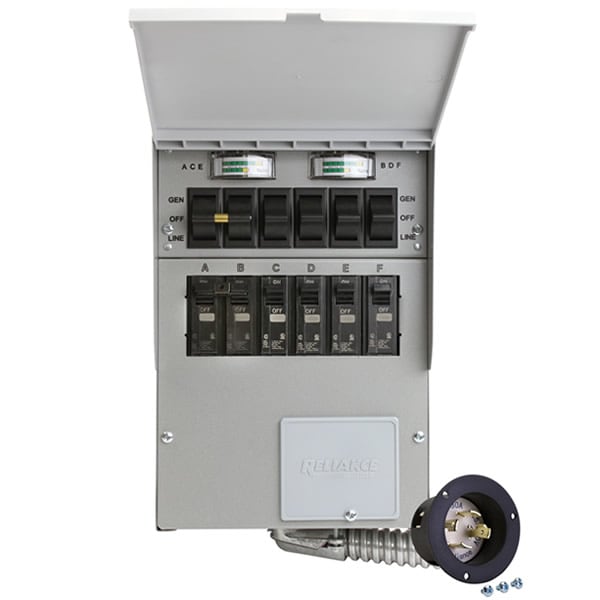 During a sudden power outage, you probably don’t feel like running multiple extension cords from your appliances to the portable generator outside. Not to mention, you have to keep your windows or garage door open to run the cords, which could be a security concern.
During a sudden power outage, you probably don’t feel like running multiple extension cords from your appliances to the portable generator outside. Not to mention, you have to keep your windows or garage door open to run the cords, which could be a security concern.
A manual transfer switch simplifies backup power by connecting a generator directly to your electrical circuits. No cords running through the house. No open windows. No hassle.
Other benefits of installing a manual transfer switch include:
- Improved Safety
- Ability to power hardwired appliances like the A/C
- Connectivity to the entire service panel
You should never plug your generator directly into an outlet in your home. This practice, known as backfeeding, is illegal because it can cause someone to be electrocuted and can set fire to your home. Installed properly, power transfer systems can eliminate these risks.
How Does a Manual Transfer Switch Work?
A manual transfer switch connects a generator to your home's main circuits and switches them to run on backup power during an outage. This means any appliance on that circuit will be powered. Many manual transfer switches are NEMA rated for indoor or outdoor installation.
There are five components needed to connect a manual transfer switch to your home: the transfer switch itself, a power cord, the generator, your electrical panel, and, in many cases, a power inlet box. Together, these components are called a power transfer system because they transfer power from the generator to your home.
Garage Installations
If your main electric panel is located in your garage, congratulations. This is the easiest and least expensive way to install a power transfer system.
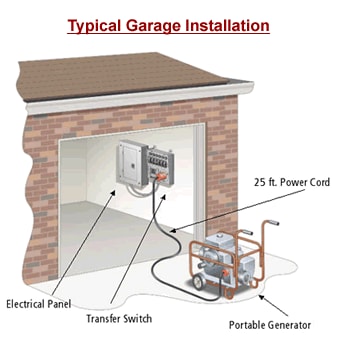
Your electrician simply connects a manual transfer switch to your main electrical panel. You don't need a power inlet box since you can run a power cord into the garage.
Basement Installations
If your main panel is located in the basement, you have two options.
- First, you can run a power cord through an open basement window.
- A better option, however, is to mount a power inlet box on the outside of your house near your electrical panel. A certified professional then hardwires the power inlet box directly to your manual transfer switch.
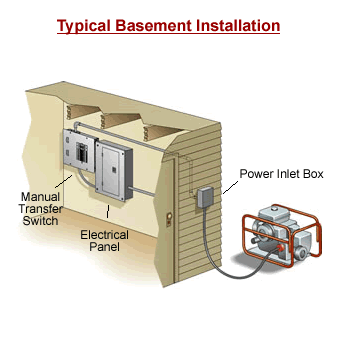
When the power goes out, you simply plug one end of a power cord into the generator. The other end connects to the power inlet box. Flip a few switches, and you're running on backup power.
Your generator's power output will determine the number of circuits you can connect. Most 5,000 watt generators can restore power to six circuits. Larger generators can power 10 circuits.
Sizing a Manual Transfer Switch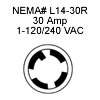 The best way to size a manual transfer switch is to match it to the largest outlet on your generator.
The best way to size a manual transfer switch is to match it to the largest outlet on your generator.
For example, if you see that your generator's largest outlet is rated at 30 amps, you will need to buy a 30-amp transfer switch to get the full power load.
Wattage Meters
Several manual transfer switches also include built-in wattage meters that keep track of what's being powered. Without them, you can overload the system, damaging your generator and appliances.
How to Connect a Manual Transfer Switch
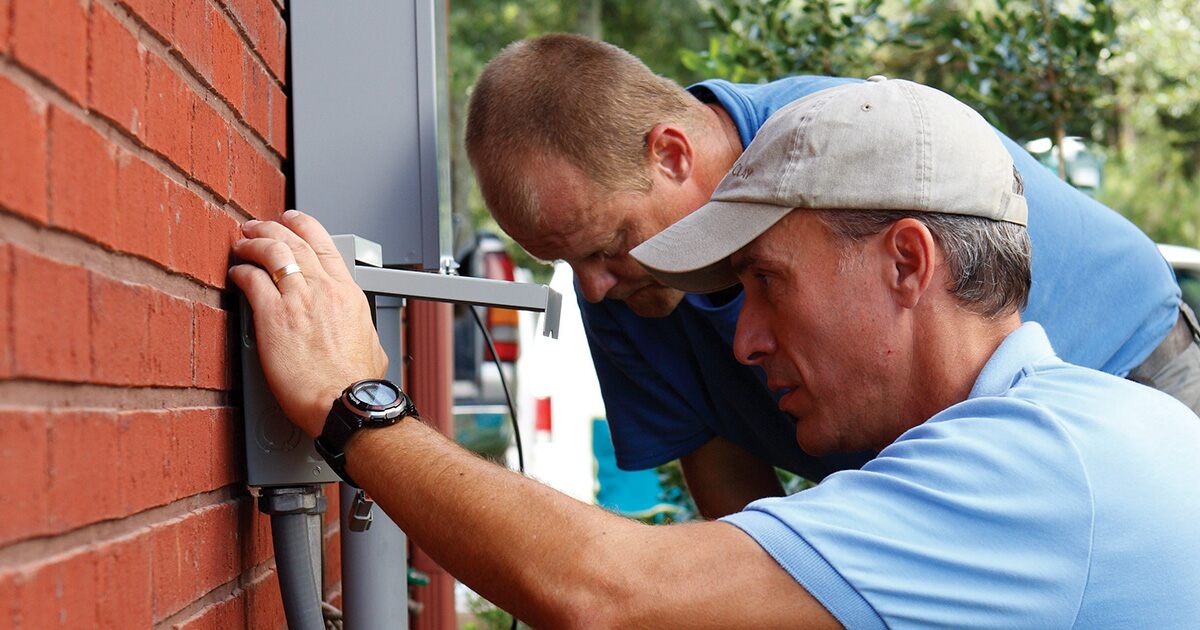 No matter what type of generator or switch you have, we highly recommend consulting the owner's manuals of both for detailed instructions and safety guidelines before using.
No matter what type of generator or switch you have, we highly recommend consulting the owner's manuals of both for detailed instructions and safety guidelines before using.
Always consult a professional installer when planning your transfer switch installation. Generally speaking, here are the steps to connect a manual transfer switch and switch to generator power during a blackout:
- Turn off all the circuits in the transfer switch.
- Connect the generator and transfer switch using a gen cord.
- Start the generator and let it warm up outside.
- Flip the main breakers in the transfer switch from "Line" to "Generator" power.
- One at a time, turn on the circuits you want to power, ensuring the generator doesn't get overloaded.
Once power is restored...
- Turn off the main breakers in the transfer switch back to "Line" power.
- Turn off the generator
- Disconnect any cords
Expert Advice
If you are still unsure which manual transfer switch is the best for your generator and home, you can always give the experts a call to get the advice you need to complete your project.
Transfer Switch Buyer's Guide Navigation
Main | Manual Transfer Switches | Automatic Transfer Switches | Power Cords | Power Inlet Box


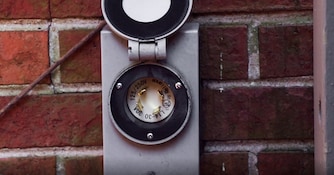
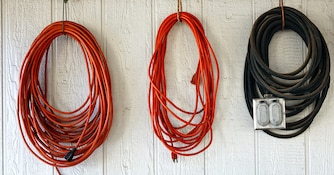

![Top 7 Best Portable Generators of 2025 [Expert-Picked]](https://www.electricgeneratorsdirect.com/article-image/334/social_img_676_a055bd9aa12972e825fa41373629af3d.jpg)